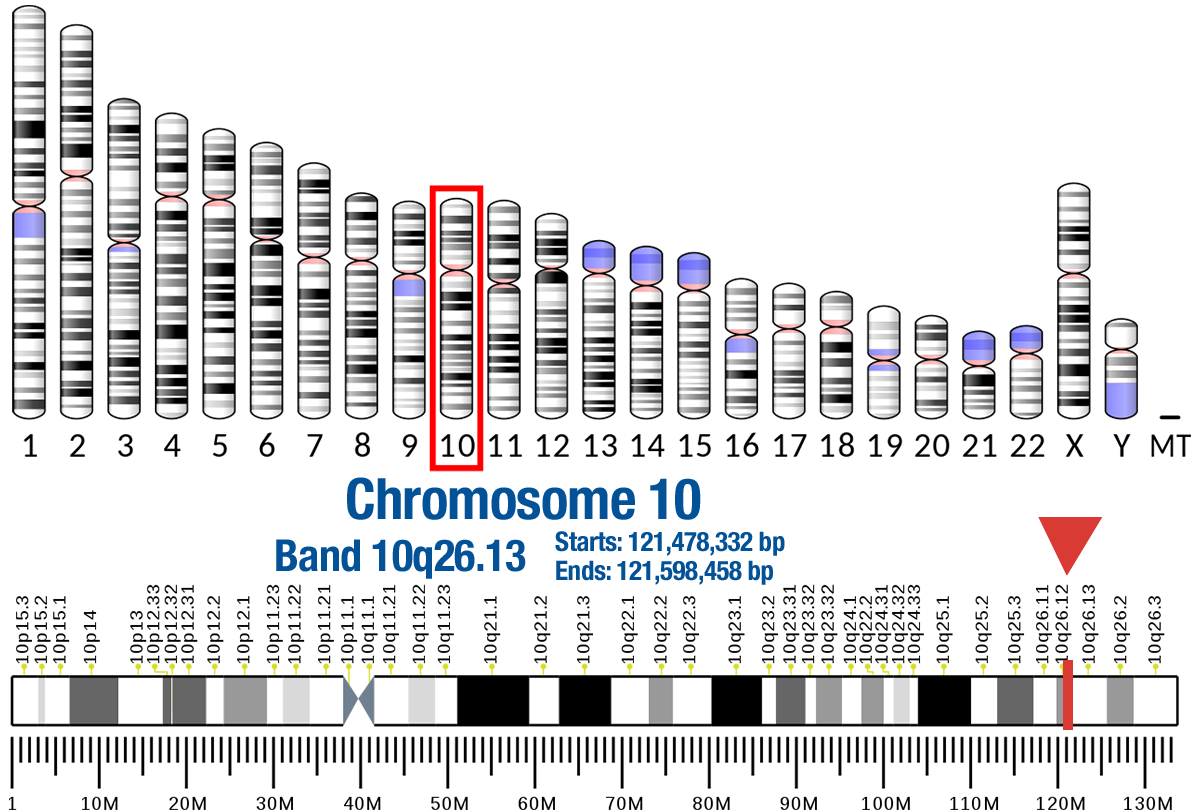
The protein encoded by this gene is a member of the fibroblast growth factor receptor family, where amino acid sequence is highly conserved between members and throughout evolution. FGFR family members differ from one another in their ligand affinities and tissue distribution. A full-length representative protein consists of an extracellular region, composed of three immunoglobulin-like domains, a single hydrophobic membrane-spanning segment and a cytoplasmic tyrosine kinase domain. The extracellular portion of the protein interacts with fibroblast growth factors, setting in motion a cascade of downstream signals, ultimately influencing mitogenesis and differentiation. This particular family member is a high-affinity receptor for acidic, basic and/or keratinocyte growth factor, depending on the isoform. Mutations in this gene are associated with Crouzon syndrome, Pfeiffer syndrome, Craniosynostosis, Apert syndrome, Jackson-Weiss syndrome, Beare-Stevenson cutis gyrata syndrome, Saethre-Chotzen syndrome, and syndromic craniosynostosis. Multiple alternatively spliced transcript variants encoding different isoforms have been noted for this gene. [provided by RefSeq, Jan 2009]
- Nucleotide binding
- Protein kinase activity
- Protein serine/threonine/tyrosine kinase activity
- Enables protein tyrosine kinase activity
- Enables transmembrane receptor protein tyrosine kinase activity
- Located in extracellular region
- Located in nucleus
- Located in cytoplasm
- Located in Golgi apparatus
- Located in plasma membrane
- Involved in negative regulation of transcription by RNA polymerase II
- Involved in angiogenesis
- Involved in ureteric bud development
- Involved in in utero embryonic development
- Involved in epithelial to mesenchymal transition
Tyrosine-protein kinase that acts as cell-surface receptor for fibroblast growth factors and plays an essential role in the regulation of cell proliferation, differentiation, migration and apoptosis, and in the regulation of embryonic development. Required for normal embryonic patterning, trophoblast function, limb bud development, lung morphogenesis, osteogenesis and skin development. Plays an essential role in the regulation of osteoblast differentiation, proliferation and apoptosis, and is required for normal skeleton development. Promotes cell proliferation in keratinocytes and immature osteoblasts, but promotes apoptosis in differentiated osteoblasts. Phosphorylates PLCG1, FRS2 and PAK4. Ligand binding leads to the activation of several signaling cascades. Activation of PLCG1 leads to the production of the cellular signaling molecules diacylglycerol and inositol 1,4,5-trisphosphate. Phosphorylation of FRS2 triggers recruitment of GRB2, GAB1, PIK3R1 and SOS1, and mediates activation of RAS, MAPK1/ERK2, MAPK3/ERK1 and the MAP kinase signaling pathway, as well as of the AKT1 signaling pathway. FGFR2 signaling is down-regulated by ubiquitination, internalization and degradation. Mutations that lead to constitutive kinase activation or impair normal FGFR2 maturation, internalization and degradation lead to aberrant signaling. Over-expressed FGFR2 promotes activation of STAT1. FGFR2_HUMAN,P21802
Beare-Stevenson Cutis Gyrata Syndrome
Antley-Bixler Syndrome Without Genital Anomalies Or Disordered Steroidogenesis
Lacrimoauriculodentodigital Syndrome
Scaphocephaly, Maxillary Retrusion, And Mental Retardation
Non-Syndromic Unicoronal Craniosynostosis
Antley-Bixler Syndrome Without Genital Anomaly Or Disorder Of Steroidogenesis
FGFR2 Localizations – Subcellular Localization Database
The protein encoded by this gene is a member of the fibroblast growth factor receptor family, where amino acid sequence is highly conserved between members and throughout evolution. FGFR family members differ from one another in their ligand affinities and tissue distribution. A full-length representative protein consists of an extracellular region, composed of three immunoglobulin-like domains, a single hydrophobic membrane-spanning segment and a cytoplasmic tyrosine kinase domain. The extracellular portion of the protein interacts with fibroblast growth factors, setting in motion a cascade of downstream signals, ultimately influencing mitogenesis and differentiation. This particular family member is a high-affinity receptor for acidic, basic and/or keratinocyte growth factor, depending on the isoform. Mutations in this gene are associated with Crouzon syndrome, Pfeiffer syndrome, Craniosynostosis, Apert syndrome, Jackson-Weiss syndrome, Beare-Stevenson cutis gyrata syndrome, Saethre-Chotzen syndrome, and syndromic craniosynostosis. Multiple alternatively spliced transcript variants encoding different isoforms have been noted for this gene. [provided by RefSeq, Jan 2009]
- Nucleotide binding
- Protein kinase activity
- Protein serine/threonine/tyrosine kinase activity
- Enables protein tyrosine kinase activity
- Enables transmembrane receptor protein tyrosine kinase activity
- Located in extracellular region
- Located in nucleus
- Located in cytoplasm
- Located in Golgi apparatus
- Located in plasma membrane
- Involved in negative regulation of transcription by RNA polymerase II
- Involved in angiogenesis
- Involved in ureteric bud development
- Involved in in utero embryonic development
- Involved in epithelial to mesenchymal transition
Tyrosine-protein kinase that acts as cell-surface receptor for fibroblast growth factors and plays an essential role in the regulation of cell proliferation, differentiation, migration and apoptosis, and in the regulation of embryonic development. Required for normal embryonic patterning, trophoblast function, limb bud development, lung morphogenesis, osteogenesis and skin development. Plays an essential role in the regulation of osteoblast differentiation, proliferation and apoptosis, and is required for normal skeleton development. Promotes cell proliferation in keratinocytes and immature osteoblasts, but promotes apoptosis in differentiated osteoblasts. Phosphorylates PLCG1, FRS2 and PAK4. Ligand binding leads to the activation of several signaling cascades. Activation of PLCG1 leads to the production of the cellular signaling molecules diacylglycerol and inositol 1,4,5-trisphosphate. Phosphorylation of FRS2 triggers recruitment of GRB2, GAB1, PIK3R1 and SOS1, and mediates activation of RAS, MAPK1/ERK2, MAPK3/ERK1 and the MAP kinase signaling pathway, as well as of the AKT1 signaling pathway. FGFR2 signaling is down-regulated by ubiquitination, internalization and degradation. Mutations that lead to constitutive kinase activation or impair normal FGFR2 maturation, internalization and degradation lead to aberrant signaling. Over-expressed FGFR2 promotes activation of STAT1. FGFR2_HUMAN,P21802
Beare-Stevenson Cutis Gyrata Syndrome
Antley-Bixler Syndrome Without Genital Anomalies Or Disordered Steroidogenesis
Lacrimoauriculodentodigital Syndrome
Scaphocephaly, Maxillary Retrusion, And Mental Retardation
Non-Syndromic Unicoronal Craniosynostosis
Antley-Bixler Syndrome Without Genital Anomaly Or Disorder Of Steroidogenesis
FGFR2 Localizations – Subcellular Localization Database

Emw. Structure of the FGFR2 protein. Based on PyMOL rendering of PDB 1djs.
Gene Location


